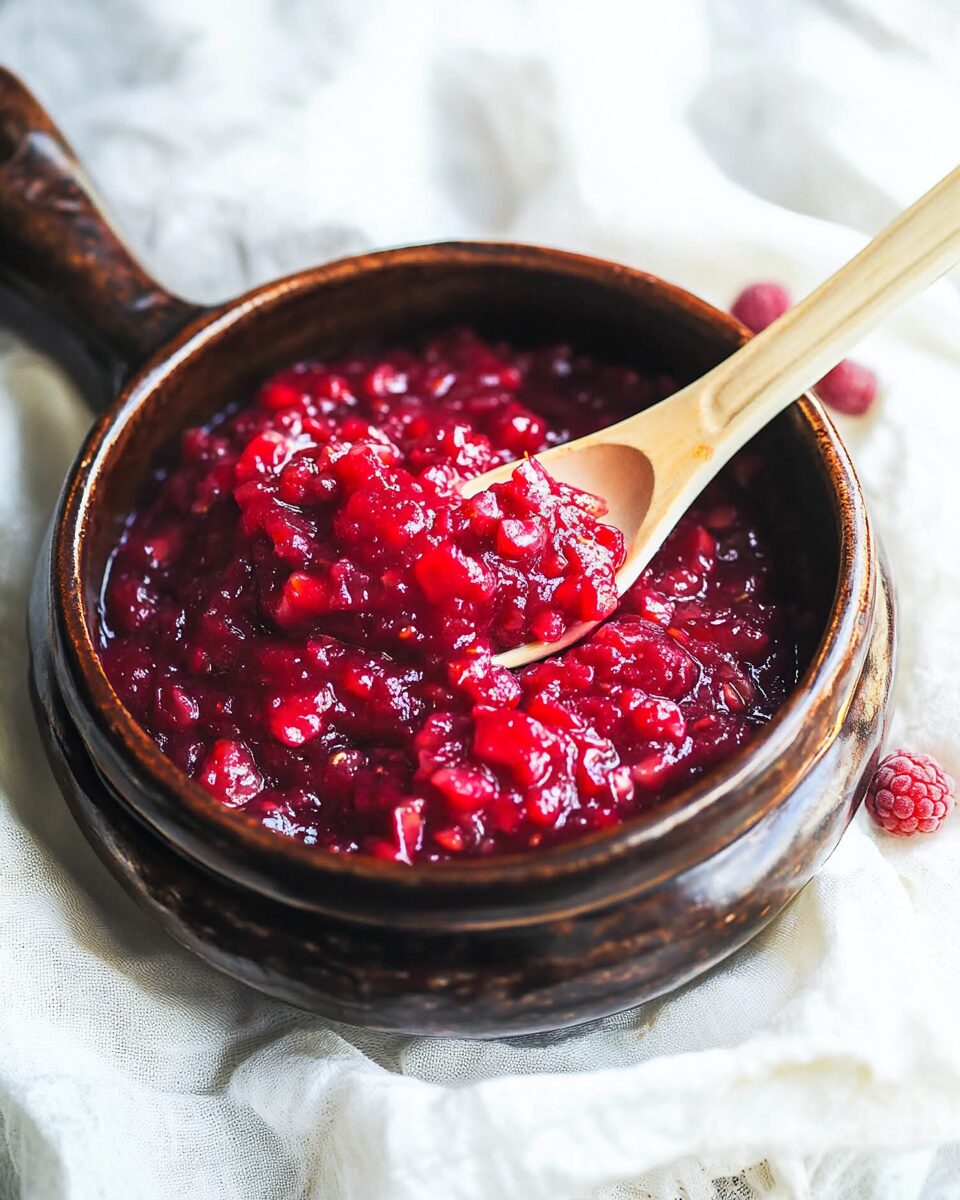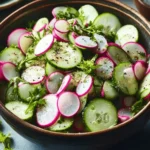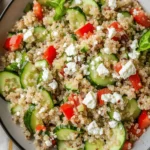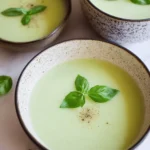This rhubarb raspberry compote is a tangy and sweet fruit topping that brings out the best in seasonal produce. With just a handful of ingredients, it simmers into a vibrant, luscious compote that’s perfect over yogurt, pancakes, ice cream, or even savory dishes like pork. Its traditional preparation method keeps the fruit’s character intact while creating a smooth, jammy texture.
FULL RECIPE
Ingredients
- 2 cups fresh or frozen rhubarb, chopped
- 1 ½ cups fresh or frozen raspberries
- ½ cup granulated sugar (adjust to taste)
- ¼ cup water
- 1 teaspoon lemon juice
- ½ teaspoon vanilla extract (optional)
Directions
- In a medium saucepan, combine rhubarb, raspberries, sugar, and water.
- Bring to a gentle boil over medium heat, stirring occasionally.
- Reduce heat to low and simmer for 10–15 minutes, or until the rhubarb softens and the mixture thickens slightly.
- Stir in lemon juice and optional vanilla extract.
- Remove from heat and let cool slightly. The compote will continue to thicken as it cools.
- Serve warm or chilled. Store in an airtight container in the refrigerator for up to one week.
Nutritional Information
- Calories: 70
- Carbohydrates: 17g
- Sugars: 14g
- Fiber: 2g
- Protein: 0.5g
- Fat: 0g
- Sodium: 0mg
History of Rhubarb Raspberry Compote
Rhubarb and raspberry compote has a long history rooted in traditional European cooking, especially in the colder climates where rhubarb thrives as an early spring vegetable. Historically, it was prized for its tartness and ability to preserve well with sugar, making it a staple in many households before refrigeration. The combination of rhubarb’s sharp acidity and the sweet, fragrant raspberries creates a perfect balance that has stood the test of time.
Cultural Significance
This compote is not just a dessert topping; it carries cultural significance in many regions, especially in the UK and Scandinavia, where rhubarb is often called the “pie plant.” It’s celebrated during rhubarb festivals and seasonal markets, often marking the arrival of spring produce.
Nutritional Benefits
Rhubarb and raspberry compote is a healthy option compared to many sugary preserves. Both fruits are rich in antioxidants and vitamins, particularly vitamin C and K in rhubarb, and vitamin C and fiber in raspberries. The compote provides a natural source of these nutrients with minimal fat and calories.
Rhubarb’s Unique Flavor Profile
Rhubarb has a distinctive tart flavor, which comes from its high natural acid content. This tartness contrasts beautifully with the natural sweetness and slight floral notes of raspberries, resulting in a complex and refreshing taste experience.
Versatility in Serving
This compote is incredibly versatile. It can be served warm or cold over breakfast foods like pancakes, waffles, or oatmeal. It also pairs well with desserts such as ice cream, cheesecake, or yogurt. Beyond sweets, it can complement savory dishes like roasted meats and cheese plates.
Seasonality and Availability
Rhubarb is typically available from early spring to mid-summer, while raspberries have a slightly shorter season. Using fresh, in-season fruit yields the best flavor and texture, but frozen fruits work well year-round without sacrificing quality.
Traditional Preparation Techniques
Traditional compote preparation involves slow simmering of fruit with sugar and a small amount of liquid. This method softens the fruit without breaking it down completely, preserving its shape and texture, unlike jam or jelly which are cooked longer for full breakdown.
Sugar and Sweetening Options
The amount of sugar used in compote recipes can vary widely based on personal preference and fruit sweetness. Some prefer to use natural sweeteners like honey, maple syrup, or agave, which can add unique flavor dimensions while reducing refined sugar content.
Use of Citrus in Enhancing Flavor
Adding lemon juice in compote recipes brightens the flavors and balances the sweetness. The acidity also helps to preserve the vibrant color of the fruit, preventing dulling during cooking.
Healthier Alternatives
For those watching sugar intake, the recipe can be adapted with reduced sugar or natural sweeteners. Additionally, pairing the compote with high-protein or whole-grain dishes can make for a more balanced and nutritious meal.
Storage and Shelf Life
Proper storage in airtight containers and refrigeration can keep the compote fresh for up to a week. For longer storage, freezing the compote in small portions preserves its flavor and texture for several months.
Pairing Suggestions
Rhubarb raspberry compote pairs beautifully with a variety of foods. It enhances creamy textures like ricotta or mascarpone cheese and adds a refreshing contrast to rich meats such as pork or duck.
Cooking Tips for Perfect Texture
To achieve the ideal consistency, it’s important to simmer the compote gently. Overcooking can lead to a mushy texture, while undercooking may leave the rhubarb too firm. Stirring occasionally prevents sticking and uneven cooking.
Common Variations
Variations include adding spices like cinnamon or ginger to add warmth and complexity, or incorporating other berries and fruits such as strawberries or blackberries to create different flavor profiles.
The Role of Vanilla
Vanilla extract is often added at the end of cooking to enhance the fruit’s natural sweetness and add depth without overpowering the tartness of rhubarb.
How to Incorporate Compote in Baking
Beyond being a topping, rhubarb raspberry compote can be swirled into cake batters, used as a filling for pastries, or layered in parfaits and trifles to add moistness and flavor.
Making it Vegan and Allergy-Friendly
This compote is naturally vegan and gluten-free. It’s also free from common allergens, making it an inclusive choice for many dietary needs.
Compote vs Jam: Understanding the Difference
Compote is less cooked than jam, meaning it retains more of the fruit’s texture and freshness. Jam involves more sugar and cooking time to create a gelled spread, while compote remains saucier and chunkier.
Environmental Impact of Ingredients
Using seasonal, locally sourced rhubarb and raspberries reduces the environmental impact of transportation and supports local farmers, making the recipe more sustainable.
Conclusion
Rhubarb raspberry compote is a timeless classic that combines nutritional benefits, versatility, and rich cultural roots. Its balance of tart and sweet flavors makes it a standout addition to both simple and sophisticated dishes. Whether served over breakfast favorites, incorporated into baked goods, or paired with savory meals, it elevates any dish with its bright, fresh taste. Its ease of preparation and adaptability to dietary preferences ensure it remains a beloved recipe for many seasons to come.






